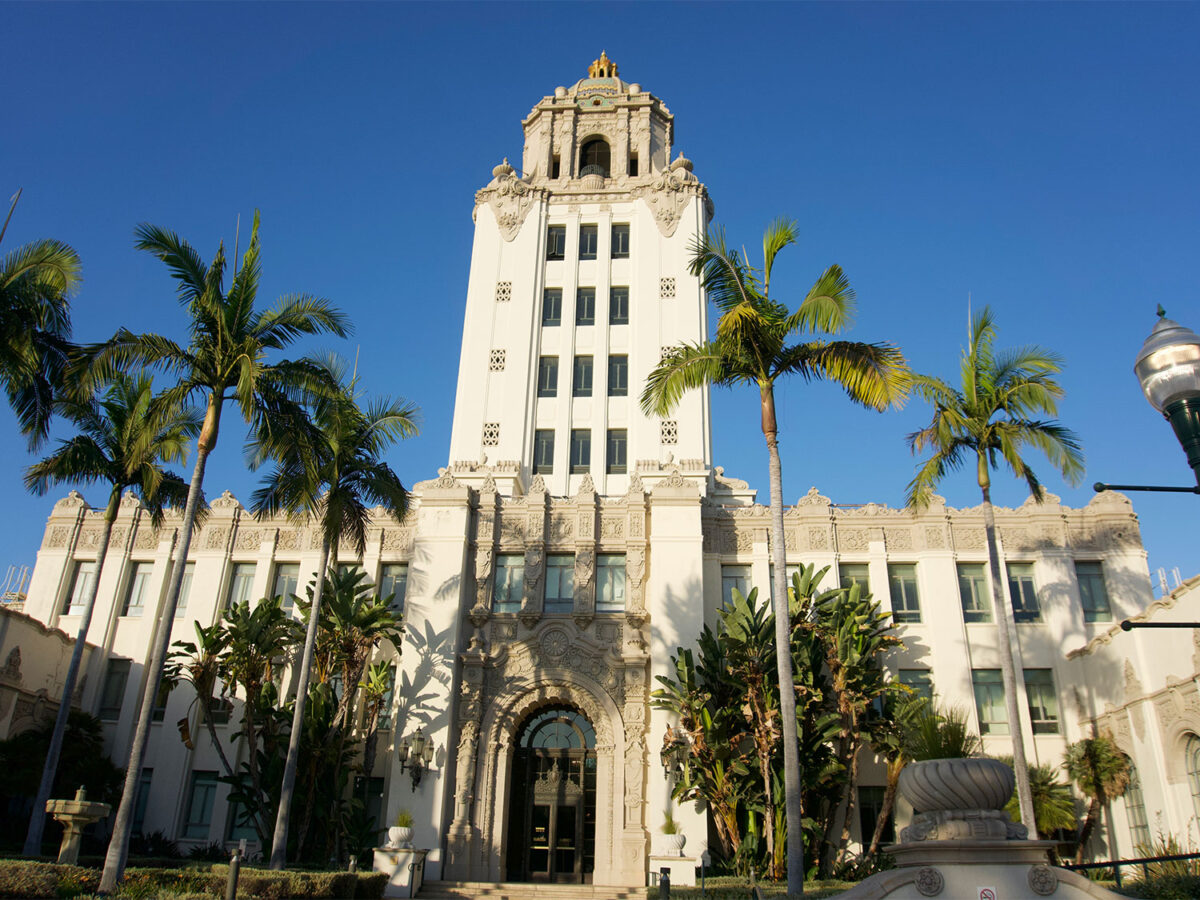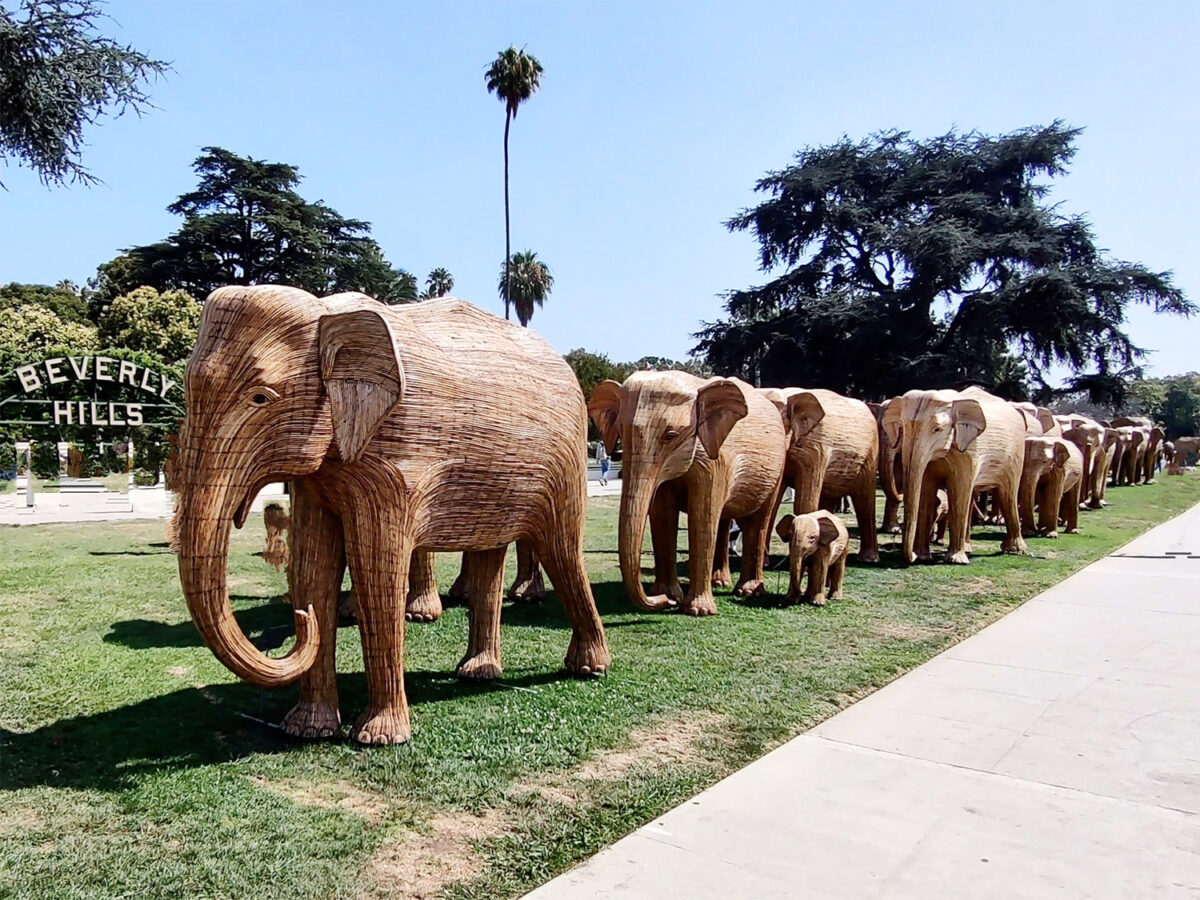Climate change has been identified as a “critical threat” to trees across Beverly Hills, according to a proposed draft of an Urban Forest Management Plan. The draft was presented to the Public Works and Planning Commissions this week and lays out long-term goals for sustainably expanding and maintaining the urban forest in Beverly Hills.
The presentation included reports on the city’s current tree inventory. It suggests many of the popular species like palm trees, which offer little shade or carbon offset value, and other species that are not drought resistant, may not be sustainable based on current climate predictions. These species would be removed and replaced over 20 years if the plan is approved.
“The saddest part of this report is, it’s not just the palms, it’s the cypress, it’s the jacarandas,” said Public Works Commissioner Josh Greer at a Sep. 9 meeting. “We’ve got some of the most iconic trees in the city really in jeopardy just from climate change and things like that. I get that we have an iconic view in Beverly Hills around the palms but realistically in the next 20 years they might not be a suitable plant.”
The report also notes that many Beverly Hills streets have a single species lining both sides of the street. This type of planting is known as “monoculture,” and the report suggests that it is a less sustainable method of planting trees because disease and pests can spread more quickly through a single species. The city saw this scenario play out in the late 1990s and in the early part of the 2000s, which is why roads like Canon Drive now have staggered palm species, according to city staff.
Strong resistance to the proposed plan came from Public Works Commission Chair Chuck Alpert who said he is rarely supportive of plans with long-term guidelines like the current draft. He said he would prefer a one-to-three-year plan that is reviewed every one-to-three years rather than a 20-year plan.
Alpert also said the current draft implies too much radical change to the current landscape and could jeopardize the cultural aesthetic of the city, saying that tourists come to Beverly Hills to see palm trees and he believes the monocultured streets increase property values.
“I think we have to look more at maintaining the monoculture, even if it means changing out trees,” Alpert said during the commission meeting, “and maintaining the palm trees by adding more vegetation and doing innovative things with our pavements and our sidewalks rather than just saying let’s change out the palms.”
While the draft plan does recommend the gradual removal and replacement of tree species not adapted to drought and heat like magnolias and sycamores, Beverly Hills City Arborist Ken Pfalzgraf assured the commission that the plan prioritizes planting new trees over removing existing trees.
“That’s what the goal is here,” Pfalzgraf said. “Let’s improve the canopy. Let’s improve the temperature in the city and the wildlife habitat. That’s the bottom line.”
Urban forestry industry standards suggest a city like Beverly Hills, which is in a mostly arid environment that would naturally be dominated by brush should have 20% tree cover. Beverly Hills currently has about 26% coverage, according to the study presented in the forest management proposal. Environmental design firm Dudek, which drafted the plan, recommends increasing the city’s canopy to 33% coverage.
Much of that suggested increase in trees is focused on improving canopy cover south of Santa Monica Boulevard where tree coverage is only about 10%, according to Dudek.
“One of the challenges is figuring out how to take the space that we have that’s largely developed and incorporate trees into those areas,” Dudek spokesperson Ryan Allen said.
About 85% percent of the space where new trees might be planted is already taken up by existing trees or covered by an “impervious surface” like concrete, according to the report in the draft plan.
Despite this challenge, Public Works Commissioner Sharona Nazarian, who announced her candidacy for City Council in August, offered enthusiastic support of the suggested goal of increasing canopy in the city’s southern neighborhoods.
“I’ve got to say I am excited about the plan and adding additional trees, especially to our southeast side,” Nazarian said at the Commission meeting. “I think that’s going to be really exciting to have that additional canopy.”
A major opportunity for increasing the canopy is on private property, which the report says already accounts for 71% of the city’s trees. To seize this opportunity, the plan makes recommendations for helping residents understand how to plant sustainable trees and suggests the city offer 100 free trees to residents.
“I can guarantee people will probably show up for a free tree,” said planning commissioner Wendy Nystrom at the meeting. “I do understand with increased heat and drought we do need to have change because certain trees will just simply die. They just cannot survive in the climate we’re heading into.”
The draft plan also suggests the gradual removal of trees that present greater fire risk like eucalyptus trees which burn faster and hotter than other species.
While the draft of the urban forest plan was supported by the Planning Commission, Public Works has carried over its review until the October meeting to give commissioners more time to consider the complex and lengthy document. The City Council’s decision whether to move forward on the plan or not will depend greatly on Public Works’ recommendation.
The Design Review Commission will also review the draft plan in October.







